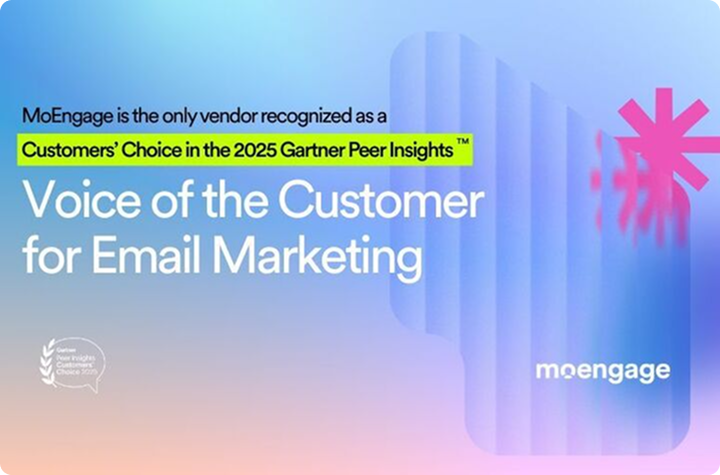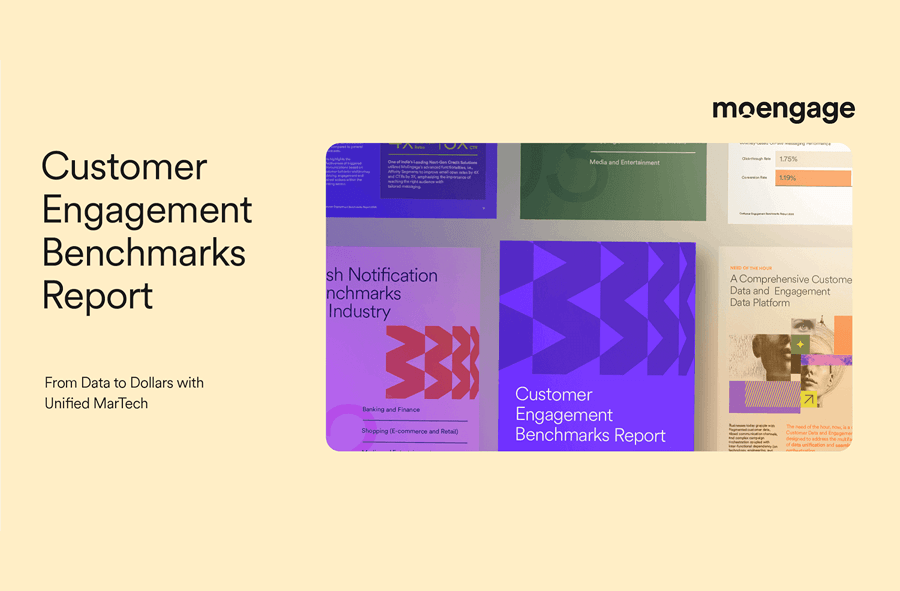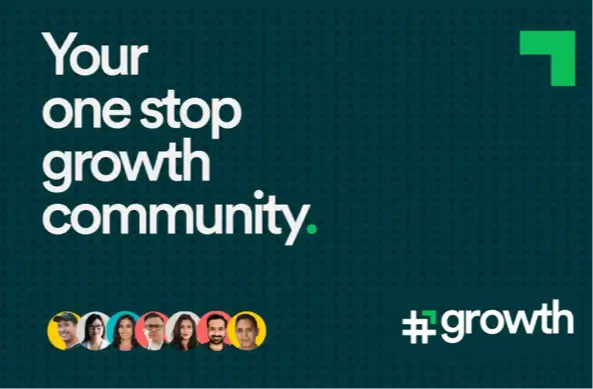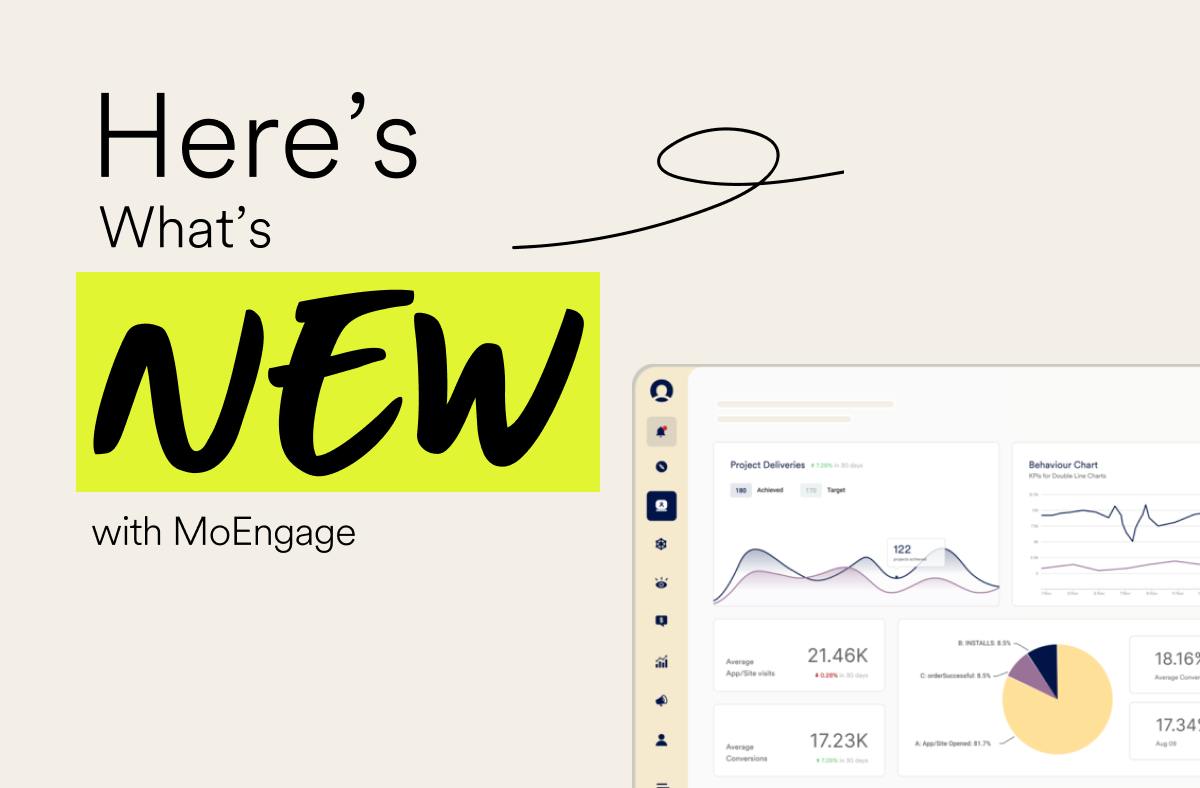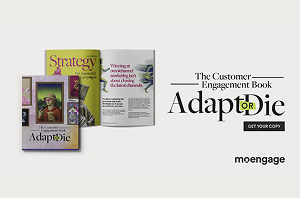Scott Brinker Q&A: Customer Engagement Book Interview
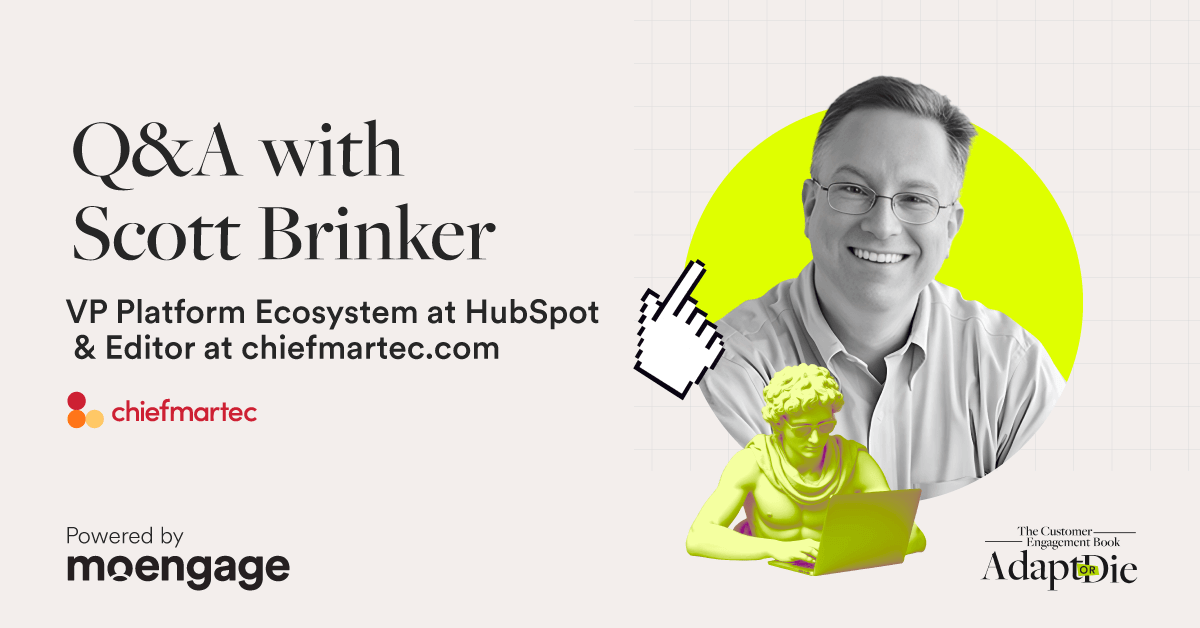
Reading Time: 11 minutes
The Martech landscape is evolving at breakneck speed, and to help us navigate this complex terrain, we’ve turned to none other than Scott Brinker, VP Platform Ecosystem at HubSpot & Editor at chiefmartec.com (AKA “the Godfather of Martech”), to help us understand how technology fuels customer engagement.
As part of “The Customer Engagement Book: Adapt or Die,” Chapter 3 focuses on technology’s pivotal role, and this interview with Scott delves into how customer engagement campaign strategies have fundamentally transformed.
We discuss the critical tools and technologies driving this change, and what marketers must understand to leverage Martech effectively.
Scott provides essential insights into building a robust campaign foundation, understanding the modern customer journey, and the vital skills marketers need to succeed in today’s tech-driven environment, including in-depth perspectives on AI and automation.
Scott Brinker Q&A Interview
1. How has customer engagement campaign strategy evolved over the past five years as a result of the evolving Martech landscape?
I think there are two things that are really at the heart of driving these more advanced campaigns and programs that we’re running. First of all, there is a heck of a lot more data.
We’re getting data from different marketing touchpoints, and so there is a lot of technology to power that.
And then the other side of it is we continue to see an expansion of engagement channels and engagement tactics. Some very interesting things are starting to happen here around AI and AI agents.
So, when you think about trying to put together comprehensive campaigns and programs here, you’re looking at the Martech capabilities.
2. What are some of the critical modern-day tools and technologies for customer engagement, and how has the Martech stack changed over the last few years?
There’s typically a data layer.
Historically, that was things like CRMs. Over time it also became Customer Data Platforms (CDPs). And even more recently you have folks who are using things like their cloud data warehouses as their CDP.
That’s where the foundation is, the source managing this data about our audience and who we’re engaging with.
On top of that, you typically see a platform being used for orchestration, particularly through email campaigns or personalization sent to websites or push channels.
The label here has changed over the years. Now, they’re more commonly called customer engagement platforms, CEPs.
Those are your two foundations: the data layer and the orchestration layer.
And then, very often, there are complementary things: What are you doing to actually run your web experience and your web apps? Whether this is a DXP or something like that, if you’re an e-commerce business, it might be an e-commerce platform.
Those are the three core things from a Martech perspective.
And then you have a large number of things that surround it. In Martech, you might have platforms that you’re using specifically for social media management and marketing.
If you’re doing content marketing, there’s the distribution of the content, which typically happens through customer engagement platforms or your DXP.
And there’s a bunch of even further niche solutions that revolve around those core three platforms.
3. What foundational elements must marketers have in place to make Martech an effective precursor to campaign success?
Again, there’s infrastructure-level capabilities that you need in place. Once you’ve got that, then it becomes a little bit more tailoring the capabilities you develop in your stack to the particular strategies that you want to execute.
I always highly recommend that you start by mapping your customer journey.
We know the customer journey, in reality, is never as clean and as linear as we make it look like when we’re mapping this stuff out. But mapping it out, even if it’s a bit of a decision tree, is still really useful to understand.
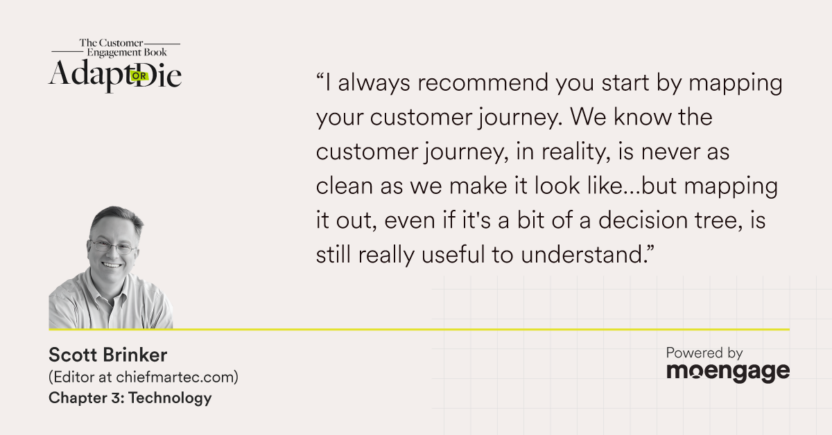
As people come to us through different mechanisms or through different intents, what tends to be their process? What are the things that they’re trying to overcome to make decisions as to whether or not we’re the right product or service for them?
And so, as you map that out and you understand who those audiences are and how they reach you and what they’re looking for, that allows you to start to plan the sorts of capabilities you need to have to be able to deliver terrific experience at each of those points.
4. How can marketers get the customer journey map to be as close to what is actually happening as possible?
This is one of the wonderful things about the state of analytics technology here in marketing: It is able to now get beyond a single universal journey path and start to look at different cohorts, how they’re changing over time, and what those journeys look like.
We’re at this really interesting inflection point where fundamental behaviors of how people find and engage with businesses is starting to change.
Right now, with AI and AI tools, you’re starting to see some of these shifts.
Before, we had this very clean pattern of how things worked with classic Google search, and now that you’ve got things like Gemini giving you the answers rather than the links, and you have people going to other agents like ChatGPT or Anthropic.
Companies need to experiment with these changes and closely monitor who in their customer base is starting to shift their patterns of discovery and engagement.
5. How can marketers use Martech to ensure they are interpreting data in a way that aligns with customer expectations and behaviors?
The first thing is you need to make sure you are actually getting the data on the different touchpoints that you have with customers. There are so many touchpoints that customers have with us digitally that it’s not unusual for a lot of companies to have gaps in visibility.
There’s also very often just the challenge of alignment.
We might tag things a certain way in this channel, and then we tag things differently in this other channel. And so when we start to aggregate that data to try and get a more holistic view of customer behaviors and patterns, things don’t always line up perfectly.
This becomes one of the primary jobs, like a great marketing ops team is making sure we’re getting the instrumentation, we’re getting the data into the right place, and that we’re coming up with a taxonomy and a schema to make sure this data aligns in a way that now we can actually start to run reporting and start to drive insights off of things that span that journey rather than being isolated in individual silos.
6. What new skills do customer marketers need to have to be successful in today’s landscape, particularly when it comes to leveraging Martech for campaign planning and execution?
You need to be able to think like a software developer a bit.
And I’m not saying everyone in marketing needs to go out and become a software developer, but “programming” these customer journeys and experiences, designing them, deciding how they’re going to work, deciding what capabilities we need to make them work that way.
I think honestly, the more marketers have a good understanding of thinking about that in a programmatic mindset, the more valuable it is because they can have much more concrete ideas of the flow or the experience they want to create.
Data skills are super useful. You don’t have to be a data engineer, you don’t have to be a data scientist, but being more and more comfortable spelunking with this data because the tools now make it easier than ever to get access, to ask questions, but you have to be a savvy consumer of this data to know the right questions to ask what the signs are that the data is actually trustworthy?
And then I’d say the creative or implementation side of this. There are so many amazing tools coming out on the market that can empower marketers to create more ambitious content and experiences, to do it faster and cheaper.
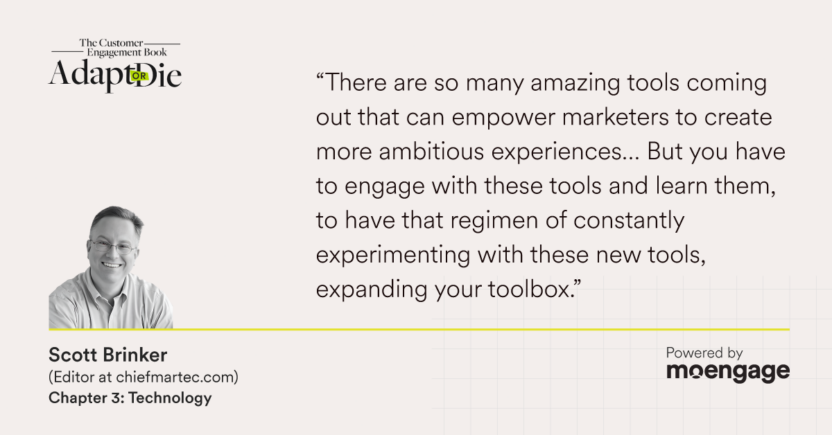
But you have to engage with these tools and learn them, to have that regimen of constantly experimenting with these new tools, expanding your toolbox.
7. What are some recommendations for how marketers can upskill themselves to stay ahead of technological advancements and evolving customer expectations?
First and foremost, accept that it’s an infinite challenge.
This is one of these things where none of us ever again in our lifetime will ever be done learning whatever we’ve learned today. There’s something new that’s just on the horizon we’re gonna have to look at tomorrow. So part of my advice is: pace yourself.
That being said, when you start to look at building these systematic ways of doing training and enablement into the marketing organization, are you empowering people to have the money to go and try new tools?
Are you providing them guardrails for how they can experiment with new tools to learn how they work?
Do you have a mechanism for peer-to-peer learning depending on the size of your organization? As people experiment and learn things, are they encouraged to turn around and teach others? Is there an exchange of ideas for that? Do you look at ways in which you are able to systematize some of that enablement capability?
It’s funny, marketers, we think a tremendous amount about sales enablement.
A lot of marketing teams think far less about marketing enablement. Some of these stats that you’ve seen over the years, often the Gartner one is probably the most cited one where they talk about “What’s been the utilization of your Martech stack over the years?” It’s been dropping from 60 to 50 to 40 to 30%.
What that data is saying is we’ve got so many marketing departments out there that have very sophisticated tech stacks, but they don’t yet have either the talent, people skills, processes, or structural frameworks in place to let those teams harness that capability.
I think getting really serious about investing in that learning and development programs for the marketing team is probably one of the best investments you could make given how fast all this technology keeps evolving.
8. How can marketers address the challenge of integrating Martech tools with existing systems and workflows?
It’s funny: on all these surveys for marketers over the years about Martech and what’s either their biggest pain point or one of their biggest things that’s important to them when buying technology, integrations is almost always in the top three.
It’s like if it doesn’t integrate, it doesn’t matter.
This really does need to be one of your top three requirements in evaluating any new technology that you’re going to bring into your Martech stack: how well does it integrate with the things I already have?
It’s an important enough issue because the tech stack isn’t static. It’s changing. There’s going to be other new tools you’re going to want to bring in over time.
A little bit of it’s just sort of like understanding their philosophy on integrations.
How much coverage does their API have? How many people in their partner ecosystem are either building integrations to them or to those other companies? Are those integrations up to date? What are the ratings and reviews like? If they have a marketplace, it’s like all these things.
9. How would you recommend effectively vetting whether or not a new tool is going to work?
The easiest level is you have a set of existing products in your tech stack that you want to keep, or you at least need to keep in the short term.
The first thing is a very easy thing to evaluate. Does this company even have an integration available out of the box for it?
If they do, then the next question is digging into, okay, well, what use cases does it support?
What data are they sharing? Do they have the ability to trigger workflow sequences from one to another? Is there any sort of user interface integration?
If you have your core platform and you’re integrating this other product, does it actually appear in the user experience for people who are working in that platform on a day-by-day basis?
What about governance? What governance framework is there if I’m integrating these products with my platform?
This sounds like a lot of work because it is a lot of work.
You really do want to have a good framework that evaluates each one of these integrations on data, workflow, user experience and governance, and make sure that the use cases you have in mind are actually going to be covered by it.
10. What are the current shortcuts where AI and automation can significantly streamline the campaign planning and execution process?
I think the two use cases where we’re seeing AI be effectively applied today are, one, the brainstorming and creative process, people working with some of these LLMs as brainstorming partners.
I can say this, having done this myself: It’s actually surprising how powerful that creative back and forth can go in ideation and digging deeper into it.
The second place where we’re seeing very concrete adoption of AI is in that production process. I would say most of the cases are not about just letting AI loose to create something on its own and then go off to the world with no human intervention.
It’s actually much more about, okay, we have a certain production process of what it took to write this piece of content, how long does it take to get to first draft?
How quickly can we edit it down? Are we going to turn it into video? Are we going to turn it into audio? If we’ve recorded a podcast and video, how do we edit that?
All these things that previously took a tremendous amount of manual work or required skills that people had to be very specifically trained in, you’re seeing more and more AI products that reduce the amount of manual work in that production process and also make it more accessible.
11. On the flip side, where is human-level strategy still required to ensure campaigns are creative, effective and aligned with customer expectations?
I think where AI isn’t yet showing up, but I expect it will, is in the evaluation of what’s working.
If you’ve come up with a great idea, you’ve produced it, you’ve got it out into the world, now you’re wanting to look at the data to get impact and insights. A lot of that is still the sort of analytics work that we’ve been doing in marketing for these past five, ten years, anyway.
I think what’s exciting is we’re starting to see some of these AI tools that are going to be able to connect to more data, particularly unstructured data.
So getting access to things like phone calls or emails or longer reviews that people wrote or things like that, and letting AI synthesize insights from that, as well as the more quantitative data.
That will be able to help inform marketers as they bring new programs and campaigns online.
12. How can marketers strike the right balance between relying on AI-driven tools and then applying their own strategic insights?
This is where the marketer is still the driver of the strategy.
Ultimately, what insights do they consider to be valuable? The marketer is still in control.
They’re going to make the decision of, okay, which of these things do I want to embrace? But they’re leaning on the AI to broaden the horizon of things that they’re willing to consider.
The second thing about making production faster and cheaper and more democratized is it allows us to go from a conceptual idea to at the very least a prototype, if not something actually out in production in the field, much more quickly, much less expensively.
And then based on the reactions we get, we can accelerate the speed by which we might iterate changes based on the feedback we’re getting.
13. With technology evolving rapidly, how can marketers future-proof their Martech investments to remain effective long term?
That comes back to integration. Because your Martech stack is going to change.
You’re going to have new requirements, you’re going to have new needs, you’re going to have new things you want to plug in.
And the only problem is today you don’t know exactly what those things are going to be next year or the year after that, so what you’re trying to do in designing the modern Martech stack make sure that the architecture and all the pieces that you’re bringing into that, they’re designed for change.
Anything that you have in your stack, I think you want to be asking the question of “How do I bring new things into it, how do I remove things from it?
If I actually want to remove this thing and replace it with something else, how easy or hard is that going to be and why? Where are those dependencies?”
This interview Q&A was hosted with Scott Brinker, VP Platform Ecosystem at HubSpot & Editor at chiefmartec.com for Chapter 3 of The Customer Engagement Book: Adapt or Die.
Download the PDF or request a physical copy of the book here.



